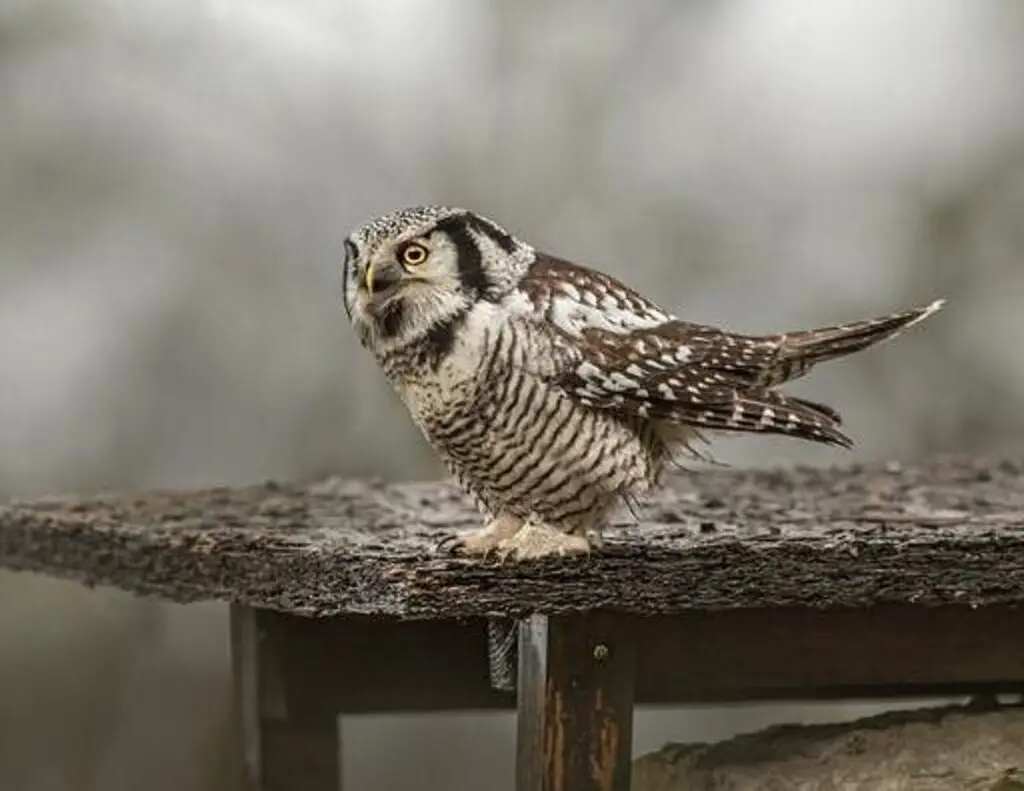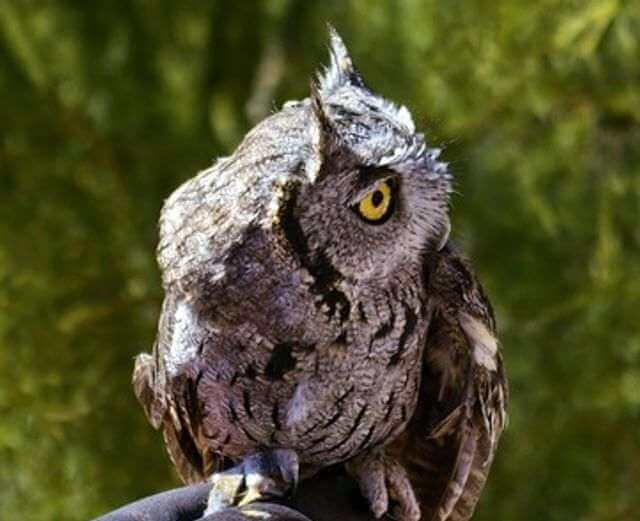Embark on a nocturnal adventure through Oregon’s diverse landscapes with our comprehensive guide to the 15 types of owls! From the iconic Great Horned Owl to the elusive Northern Pygmy-Owl, Oregon’s forests, fields, and wetlands provide a habitat for a diverse array of these captivating birds of prey.
In this in-depth guide, we’ll explore the unique characteristics, habitats, and behaviors of each owl species, offering valuable insights for bird enthusiasts and nature lovers alike.
Table of Contents
Types of Owls in Oregon
Great Horned Owl

- Length: 17.7-24.8 in (45-63 cm)
- Weight: 32.1-88.2 oz. (910-2500 g)
- Wingspan: 39.8-57.1 in (101-145 cm)
- Scientific Name: Bubo virginianus
- Frequency of Occurrence: 1.91% (Statistic by: eBird)
- Where To Find Them: The great horned owl is a large bird that is found in many different locations in Oregon. They can be found in the Columbia River Gorge, Willamette Valley, and the Coast Range.
General Information: The Great Horned Owl is a common owl found in North America. It has a distribution range that includes most of the eastern half of the continent as well as parts of southern Canada, including the provinces of Ontario and Quebec. The Great Horned Owl is found in a variety of habitats, from open fields to woods and suburban areas.
It feeds mainly on small mammals, although it will also eat birds and eggs. The owl nests in cavities in trees or buildings, but it also uses other sites such as abandoned human dwellings and even artificial structures such as light poles.
Handpicked Related Post: 35 Fun Facts About The Great Horned Owl (Detailed)
Northern Pygmy Owl
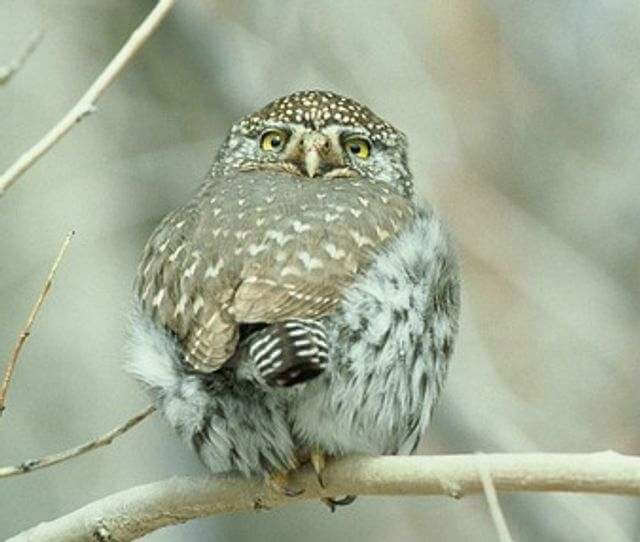
- Length: 6.7-7.5″ in. (17-19 cm)
- Weight: 2.2-2.6 oz. (62-73 g)
- Wingspan: 14.5 – 16″ in.
- Scientific Name: Glaucidium californicum
- Frequency of Occurrence: 0.6025%
- Where To Find Them: Northern Pygmy Owls are found in the Rogue and Umpqua River Valleys as well as the Coast Ranges.
General Information: Northern Pygmy Owl is a small owl that resides in the boreal forest and tundra of North America. The distribution range of this owl covers most of the northern United States and Canada, as well as parts of Alaska and Siberia. This owl inhabits coniferous forests, woodlands, wetlands, taiga, and tundra.
Northern Pygmy Owls prefer to hunt during the daylight hours, but are also opportunistic feeders. They consume a variety of prey including small mammals, birds, reptiles, amphibians, and insects. Northern Pygmy Owls nest in holes in trees or on high ground.
Western Screech Owl
- Length: 7.5-9.8 in (19-25 cm)
- Weight: 3.5-10.8 oz (100-305 g)
- Wingspan: 21.6-24.4 in (55-62 cm)
- Scientific Name: Megascops kennicottii
- Frequency of Occurrence: 0.4435%
- Where To Find Them: These owls can be found in locations in Oregon, such as the Rogue River-Siskiyou National Forest and Crater Lake National Park.
General Information: The Western Screech Owl is a medium-sized owl found in the western United States and southwestern Canada. It has a wide distribution range, extending from Oregon to northern Baja California.
The owl is found in a variety of habitats, including open country, woodlands, and mountainous regions. It feeds mostly on small animals, but will also eat reptiles and insects. The owl nests in holes in trees, typically 2-3 stories high.
Barred Owl
- Length: 16.9-19.7″ in (43-50 cm)
- Weight: 16.6-37.0 oz. (470-1050 g)
- Wingspan: 39.0-43.3″ in (99-110 cm)
- Scientific Name: Strix varia
- Frequency of Occurrence: 0.4058%
- Where To Find Them: A Barred Owl can be found in a variety of locations in Oregon. They are most commonly found in the mountains, but they can also be found on the coast. They are very common in the area around Eugene and Springfield.
General Information: The barred owl is one of the most widely distributed owls in North America. It is found throughout the eastern and central United States, as well as parts of Canada. The barred owl prefers wooded areas with plenty of open spaces, such as deciduous and mixed forests, but it can be found in other habitats, including suburban areas.
The barred owl is a diurnal bird and spends most of its time hunting in open landscapes. Its diet consists mostly of small mammals, such as rabbits and squirrels, but it also eats birds and eggs. It nests in holes or cavities in trees, ledges, and nest boxes.
Barn Owl
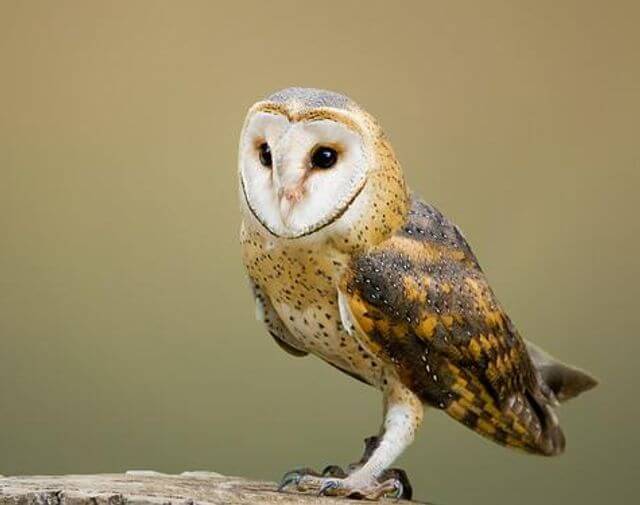
- Length: 12.6-15.8″ in (32-40 cm)
- Weight: 14.1-24.7 oz. (400-700 g)
- Wingspan: 39.4-49.2″ in (100-125 cm)
- Scientific Name: Tyto alba
- Frequency of Occurrence: 0.3523%
- Where To Find Them: Barn Owls are found all over Oregon, but some of their favorite spots include the Coast Range, the Siskiyou Mountains, and the Willamette Valley. These owls are masters of hunting at night, so be sure to keep your eyes open for them when venturing out into nature!
General Information: Barn owls are common in the eastern United States, and their distribution ranges extends west to the Great Lakes region and south to Florida. Barn owls are a timid bird, which means they live in areas that are not heavily populated.
They prefer open fields and rural areas with plenty of trees for nesting. Their diet consists of small mammals, such as rats, mice, and rabbits. Barn owls build their nests in holes in trees or on high surfaces.
Short-eared Owl
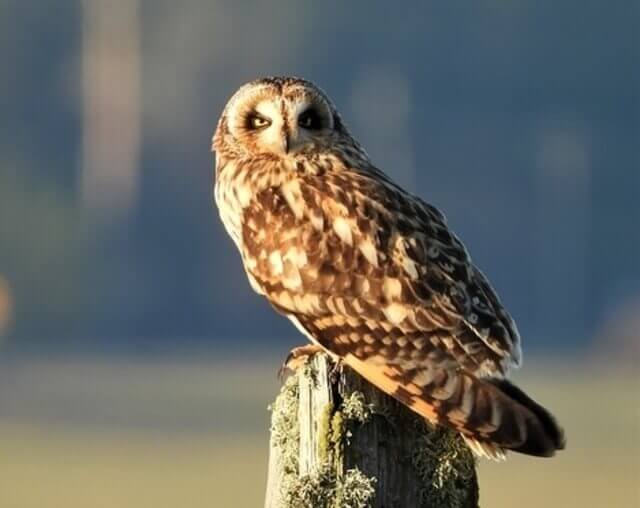
- Length: 13.4-16.9 in (34-43 cm)
- Weight: 7.3-16.8 oz. (206-475 g)
- Wingspan: 33.5-40.5 in (85-103 cm)
- Scientific Name: Asio flammeus
- Frequency of Occurrence: 0.2296%
- Where To Find Them: The short-eared owl is a common owl found in many parts of Oregon. They are most commonly found in the Cascade Range and in the Willamette Valley.
General Information: The distribution range of the Short-eared Owl is found in North America and Eurasia. In North America, they are found in the northern parts of the continent and in Canada. They are also found in Mexico. In Eurasia, they are found mainly in Europe, but they have been seen as far east as China.
They inhabit wooded areas, including parks and forests. Their diet consists mostly of small mammals such as mice and voles, but they will also consume birds, insects, and other small animals. They tend to nest on the ground in dens or under trees.
Northern Saw-whet Owl
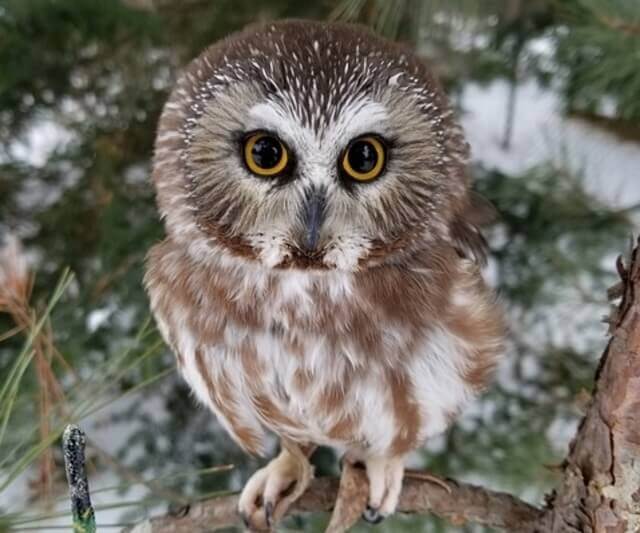
- Length: 7.1-8.3 in (18-21 cm)
- Weight: 2.3-5.3 oz. (65-151 g)
- Wingspan: 16.5-18.9 in (42-48 cm)
- Scientific Name: Aegolius acadicus
- Frequency of Occurrence: 0.1405%
- Where To Find Them: Northern Saw-whet Owl are found in a variety of locations throughout Oregon. They can be found in the Cascade Range, the Coast Ranges, and the Willamette Valley. In general, they are most commonly found near forested areas or high elevations.
General Information: The Northern Saw-whet Owl is a small owl that inhabits the boreal forests of the north-central and northeastern United States. It is most common in Minnesota, Wisconsin, Michigan, and Ontario, but also occurs in parts of New York and North Dakota. The owl’s distribution ranges from the tundra of Alaska to the eastern hardwood forest of Florida.
The owl prefers wooded areas with sufficient cover for nesting and foraging; it nests in cavities excavated by other birds or by natural cavities, such as in cliffs or tree roots. Its diet consists principally of small prey items such as rodents, birds, and amphibians.
Handpicked Related Post: What is the Smallest Owl in North America?
Burrowing Owl
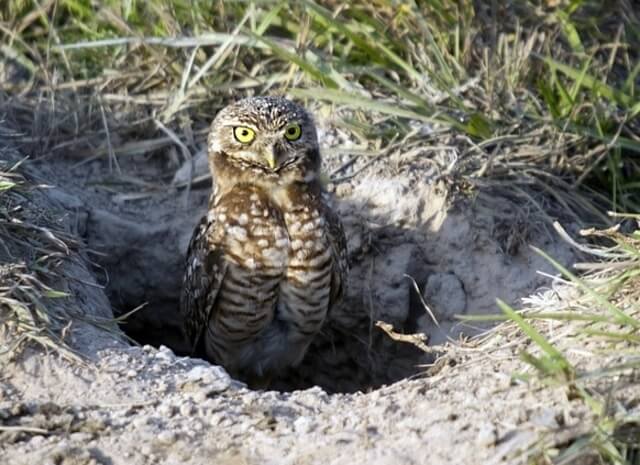
- Length: 7.5-9.8″ in (19-25 cm)
- Weight: 5.3 oz. (150 g)
- Wingspan: 21.6″ in (55 cm)
- Scientific Name: Athene cunicularia
- Frequency of Occurrence: 0.1373%
- Where To Find Them: Burrowing owls are found in a large number of locations in Oregon, but some of the more popular spots are: The Rogue River-Siskiyou National Forest has a good population of burrowing owls. The Coast Range north of Astoria is also home to a good population of these owls. In the McKenzie Mountains, there is a burrowing owl watchtower that allows visitors to see the owls up close. And finally, on Mount Hood, there is an observation deck that provides great views of the burrowing owls living there.
General Information: The Burrowing Owl is a small owl that lives in the northeastern United States and eastern Canada. It has a distribution range that includes portions of New York, Vermont, Maine, New Brunswick, Quebec, Ontario, Manitoba, Saskatchewan and Alberta.
The owl prefers woodlands with access to open areas such as fields or grassy areas, as well as rocky hillsides . Its diet consists mainly of insects, but it will also eat small mammals and birds. The Burrowing Owl nests in burrows and usually lays two to twelve eggs.
Handpicked Related Post: Really Cool Burrowing Owl Facts That Will Amaze You!
Great Gray Owl
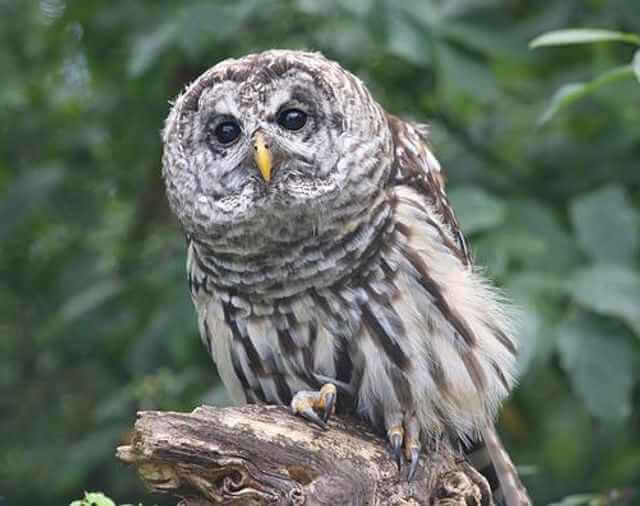
- Length: 24.0-33.0 in (61-84 cm)
- Weight: 24.7-60.0 oz. (700-1700 g)
- Wingspan: 53.9-60.2 in (137-153 cm)
- Scientific Name: Strix nebulosa
- Frequency of Occurrence: 0.0810%
- Where To Find Them: There are many different locations where the Great Gray Owl can be found in Oregon. Some of these locations include the Cascade Mountains, the Willamette Valley and the Coast Range.
General Information: The Great Gray Owl is a large owl that can be found throughout the continental United States, as well as parts of northern Mexico. The owl’s distribution range spans from the Arctic tundra to the central desert. This wide-ranging owl is most commonly seen in open woodland and scrubland, but can also be found in urban areas.
The Great Gray Owl feeds mostly on rodents and other small animals, but will occasionally take down larger prey. It nests in both old raptor or raven nests, and sometimes builds its own nest.
Handpicked Related Post: 53 Fun Facts About The Great Gray Owl (Photos, ID & Info)
Long-eared Owl

- Length: 13.8-15.8 in (35-40 cm)
- Weight: 7.8-15.3 oz. (220-435 g)
- Wingspan: 35.4-39.4 in (90-100 cm)
- Scientific Name: Asio otus
- Frequency of Occurrence: 0.0530%
- Where To Find Them: They are found in Oregon locations such as Crater Lake National Park and Mount Hood National Forest.
General Information: The long-eared owl is a common and widespread bird found throughout North America. It ranges from the Canadian tundra to the warm deserts of California, and from the boreal forest of Alaska to the tropical rainforests of Costa Rica. The owl is typically found in forested areas, but can be found near human habitation if these areas are well-maintained.
The long-eared owl is primarily a nocturnal bird, but it sometimes forages during the day. Its diet consists mainly of small animals, including rodents, birds, as well as bats, shrews, snakes, lizards, and other creatures. . It often nests in old raptor or raven nests, but will also use natural cavities in trees or cliffs.
Flammulated Owl

- Length: 5.9-6.7 in (15-17 cm)
- Weight: 1.5-2.2 oz (43-63 g)
- Wingspan: 15.9-16.1 in (40.5-41 cm)
- Scientific Name: Psiloscops flammeolus
- Frequency of Occurrence: 0.0390%
- Where To Find Them: The Flammulated Owl is a small owl that can be found in the Cascade, Coast and Columbia Mountains of Oregon. They are usually found near water, such as in rivers, lakes or streams.
General Information: The Flammulated Owl is a large owl that is found in North America. It has a distribution range that stretches from southern Canada to central Mexico. This owl is most commonly found in deciduous and mixed forests, but can also be found in coniferous forests and even urban areas.
The diet of the Flammulated Owl consists of insects, which it captures using its talons. It nests in tree cavities, but has also been known to use artificial nest boxes.
Spotted Owl

- Length: 18.5-19.0 in (47-48 cm)
- Weight: 17.6-24.7 oz (500-700 g)
- Wingspan: 39.8 in (101 cm)
- Scientific Name: Strix occidentalis
- Frequency of Occurrence: 0.0259%
- Where To Find Them: The spotted owl is a large bird that is found in many locations in Oregon. They can be found in the Cascade and Coast ranges, as well as the Beaumont and Willamette mountains.
General Information: The spotted owl is a large, powerful bird that ranges across most of North America. It has a Distribution Range of from southern Canada to central Mexico, and from the Arctic tundra to the southernmost forests. The spotted owl is found in a variety of habitats including coniferous and mixed forests, taiga, and grasslands.
The spotted owl is chiefly a predator of small mammals, but will also feed on birds and fish. Its main diet includes squirrels, wood rats, voles, mice, and other small rodents as well as some amphibians, reptiles and insects. The spotted owl typically nests in high trees or tall shrubs, but will also use old nests left behind by birds of prey or squirrels..
Snowy Owl
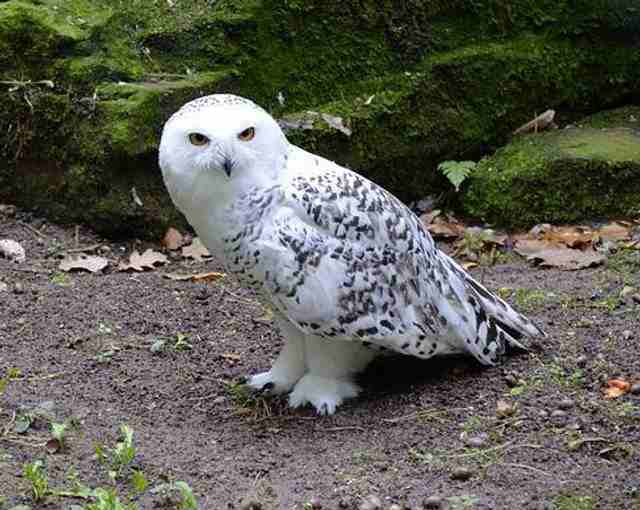
- Length: 20.5-27.9 in (52-71 cm)
- Weight: 56.4-104.1 oz. (1600-2950 g)
- Wingspan: 49.6-57.1 in (126-145 cm)
- Scientific Name: Bubo scandiacus
- Frequency of Occurrence: 0.0225%
- Where To Find Them: Oregon is home to a variety of habitats, which makes it an excellent place to find the Snowy Owl. These owls can be found in places like the Cascade Mountains, the Coast Range, and the Willamette Valley.
General Information: The snowy owl is a large raptor that can be found throughout most of North America. It is the most common owl in North America and the most widely distributed bird in the world. The snowy owl has a wide distribution range that includes all of Canada, much of the United States, as well as portions of Europe and Asia.
The snowy owl inhabits a variety of habitats including tundra, boreal forests, grasslands and deserts. It primarily eats rodents such as lemmings and mice, but will also eat birds. The snowy owl nests on the ground in depressions or on high perches near water sources.
Handpicked Related Post: 48 Fun Facts About Snowy Owls (with Photos, ID & Info)
Boreal Owl
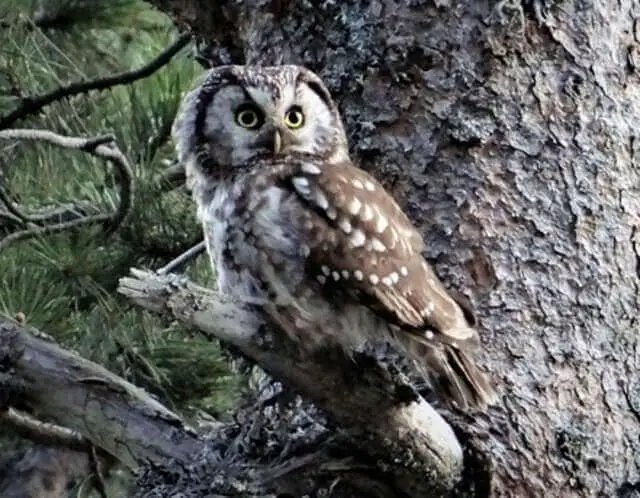
- Length: 8.3-11.0 in (21-28 cm)
- Weight: 3.3-7.6 oz (93-215 g)
- Wingspan: 21.6-24.4 in (55-62 cm)
- Scientific Name: Aegolius funereus
- Frequency of Occurrence: 0.0011%
- Where To Find Them: They also live near mountains, so you might find them in areas like the Columbia River Gorge or Mount Hood National Forest.
General Information: The boreal owl is a small, conspicuous owl found in the Northern Hemisphere. The distribution range of the boreal owl ranges from the arctic tundra to the subarctic forest.
This owl prefers open areas with plenty of trees and shrubs for nesting, but will also use cliffs, abandoned buildings, and artificial cavities such as bird boxes. The diet of the boreal owl consists mainly of small mammals, but they may also eat carrion or insects.
Northern Hawk Owl
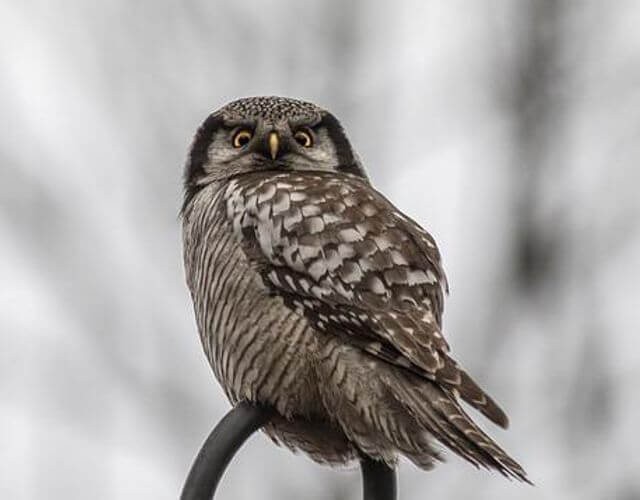
- Length: 14.2-17.7 in (36-45 cm)
- Weight: 8.5-16.0 oz. (240-454 g)
- Wingspan: 27.9 in (71 cm)
- Scientific Name: Surnia ulula
- Frequency of Occurrence: 0.0008%
- Where To Find Them: Northern Hawk Owls are typically found in the Cascade Mountains, where they can be found perched in high trees or on high peaks. In Oregon, they can be found in the Mount Hood National Forest and Rogue River-Siskiyou National Forest.
General Information: Northern Hawk Owl is native to the northern US and Canada. They are widely distributed in these regions, but their range extends south into Mexico. They can also be found in Eurasia, Scandinavia and Northern Russia. Northern Hawk Owls are typically found in open areas with plenty of trees and shrubs for nesting.
They often inhabit areas near water sources such as lakes, rivers, or streams. Their diet consists mostly of small rodents, birds, and other wildlife. They usually nest in large holes or cavities in tree branches.
Related Post: Most Common Backyard Birds In Oregon (Explained)

